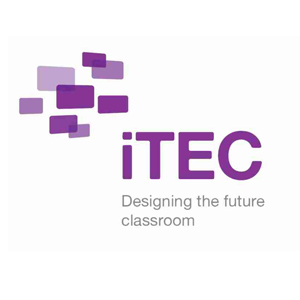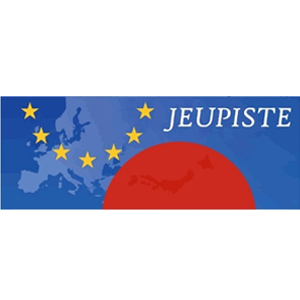E
very company today, in order to be competitive, must acknowledge the importance of digitization. According to McKinsey’s, there are six critical decisions a company must make in order to address the issue of digitization.
1. Modeling Your Portfolio – To Buy Or To Sell?

Buy or Sell?
In a digital world, a company’s growth and income become smaller and competitive strategies have other rules. This is why it is important for a business to alter the way it models its portfolio if it is willing to achieve its goals.
Many famous companies have acquired the digital services of other digital companies. The best example would be the cosmetics and perfume retailer – Sephora. They bought Sentsa, a software developer who produces apps and online services specially designed for this kind of company. Their goal was to keep the technology away from competitors.
It often occurs to companies to decrease their spending in order to reinvest the money in digitization. Home depot, for instance, shifted its initial investment strategy away from opening new stores to actually acquiring new warehouses meant for online selling as well as buying Blinds.com.
2. The Digitized Model – Adapt Or Abandon Altogether?

Adapt or Abandon?
Some companies decide to remodel their business entirely in order to adapt to digitization. A European brokerage group that deals in real-estate decided to create an online platform that would open to even its competitors. Their goal was to become the leading online real-estate marketplace. Some businesses are, however, better off abandoning digital moves altogether.
This type of decision is a risk to take in both paths. On one hand, digital effort may erode margins and cannibalize products and services, while on the other hand, it may stock data on existing buyers ultimately helping incumbents in their efforts to create large customer bases.
3. Attackers – Compete Or Cooperate?

Compete or Cooperate?
Large companies, regardless of how influential and powerful they are, can truly succumb to the threat of losing to competitors who do a better job at embracing digital trends. The question here is whether you should always attack your competitor or, in some cases, cooperate with them.
Santander formed a partnership with Funding Circle. Seeing that their clients wanted a peer-to-peer lending service, they thought it would be a much more practical idea to use the technology of a competitor by cooperating with him, rather than creating a system from scratch.
Some companies start by cooperating between each other before eventually creating their own digital services. That was the case for many British banks when they wanted to build a mobile-payment utility.
In the case of CapitalOne, it was a better decision for them to open their own software called CapitalOneLabs. They managed to defend their space without expending their own capital.
4. Invest In Various Initiatives Or Focus On A Single One?

One or Many?
Some digital opportunities might not be worth investing in as they are easily replicated by competitors. An answer to this issue would be to seed multiple initiatives all while identifying the ones that need to be killed off and those that have a genuine potential. Merck’s Global Health, for instance, has invested in more than 20 start-ups in various areas.
Another way to invest would be in one single area. A global pharmaceutical incumbent chose this method by making significant investments in a pooling data with health insurers that would provide rates of adherence to drug regimes. It also uses data that can identify patients in order to produce medicine more quickly with the help of a program that they encourage their patients to use for monitoring purposes.
5. Integrate Digital Operations Into Physical Businesses Or Separate Them?

Integrate or Separate?
An additional value can be the outcome of an integration of digital operations into physical businesses. On the other hand, a coexistence of these two practices may lead to a conflict and, thus, hinder the business’ ability to adapt to the challenges of digitization.
John Lewis, a UK department store chain, acquired Buy.com and combined it with its core business.
Wal-Mart chose a different strategy by establishing its digital business away from its corporate headquarters, thus allowing a new culture and new skills to grow.
Companies that have a diverse portfolio may opt for the hybrid model, combining both the stand-alone and well-integrated form of digital organization.
6. The Digital Agenda – Hire An Agent Or Own The Business?

Hire or Own?
Considering how quickly competitive situations evolve and customer behavior changes, updating the digital agenda is a task that requires the attention and time of high positioned managers. The embracement of an effective digital strategy may even require CEO involvement in larger companies.
To tackle the ever-growing issue, companies hire what is referred to as a chief digital officer. The officer in question reports directly to the CEO, proving the importance of the practice in businesses. An example here would be Walgreens, a company that successfully bought their competitors, having a better position since they have created a role equivalent to the digital chief officer. However, a focus on this role may also be a risk. Since digital chief officers lack a CEO’s strategic knowledge, influence and authority, they may narrow their focus on marketing and social media.
An alternative would be that CEOs themselves direct the digital agenda. This method may be necessary if digitization is a top priority in the company’s agenda or if digital businesses require an amount of resources for the entire organization’s functioning.
Whatever model a CEO chooses or decision he makes, it is important to understand that digitization is an ever-growing and moving phenomena. Harnessing the trend demands relentless leadership but provides companies with great competitive positions and growth.







 Cambridge examiners are teachers or experts in their subject. It’s really important that they all mark to the same standard. This means that they mark according to the mark scheme and they all apply the mark scheme in the same way. To make sure this happens, a team of experienced senior examiners get together once the exam is done. They will mark a sample set of scripts using the scheme and will agree on the marks.
Cambridge examiners are teachers or experts in their subject. It’s really important that they all mark to the same standard. This means that they mark according to the mark scheme and they all apply the mark scheme in the same way. To make sure this happens, a team of experienced senior examiners get together once the exam is done. They will mark a sample set of scripts using the scheme and will agree on the marks. Grade boundaries are the minimum marks one needs to achieve a grade. A mixture of statistical evidence and expert judgment is used to agree on the Grade Boundary. This system allows a student not to get a weaker grade just because the paper she or he sat on was more difficult than the previous one. Cambridge tries to make question papers of the same level of difficulty every year but they can vary slightly – Grade Boundaries are used to manage this. Senior examiners carry out final checks on the marking leading to the results.
Grade boundaries are the minimum marks one needs to achieve a grade. A mixture of statistical evidence and expert judgment is used to agree on the Grade Boundary. This system allows a student not to get a weaker grade just because the paper she or he sat on was more difficult than the previous one. Cambridge tries to make question papers of the same level of difficulty every year but they can vary slightly – Grade Boundaries are used to manage this. Senior examiners carry out final checks on the marking leading to the results.










